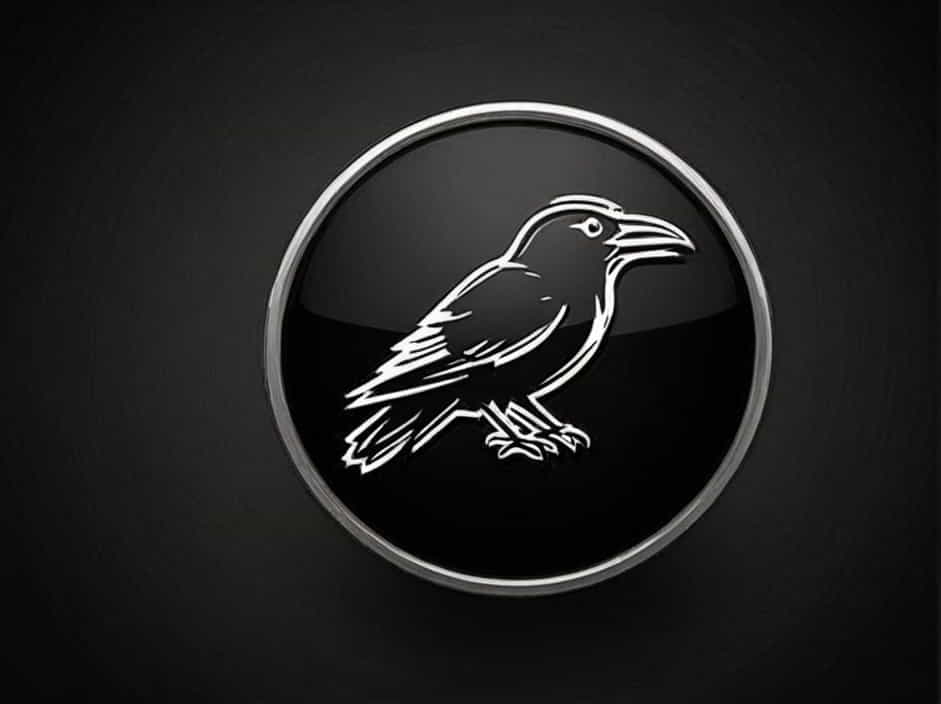The raven is a bird that has fascinated humans for centuries. With its glossy black feathers, sharp intelligence, and eerie call, the raven has been the subject of myths, legends, and spiritual beliefs worldwide. But what exactly does a raven symbolize?
This topic explores the meaning of the raven, its role in different cultures, and why it continues to be a powerful symbol in literature, folklore, and modern interpretations.
What Is a Raven?
Ravens belong to the Corvidae family, which includes crows, magpies, and jays. The common raven (Corvus corax) is one of the largest and most intelligent birds in the world. These birds are known for their:
- Glossy black feathers
- Strong, curved beak
- Deep, croaking call
- High intelligence and problem-solving skills
Ravens are often confused with crows, but they are larger, have a thicker beak, and a wedge-shaped tail.
Symbolism of the Raven
The meaning of a raven varies depending on culture and belief systems. Here are some of the most common symbolic meanings:
1. Raven as a Symbol of Intelligence
Ravens are extremely intelligent birds. Studies show that they can:
- Use tools to solve problems
- Recognize human faces
- Plan for the future
- Communicate complex messages
Because of this, ravens often symbolize wisdom, knowledge, and cunning. Many ancient cultures believed that ravens carried messages from the gods.
2. Death and the Supernatural
In many cultures, ravens are associated with death and the afterlife. Their black feathers and their habit of scavenging dead animals contribute to this belief.
- In European folklore, ravens were often seen near battlefields, feeding on fallen soldiers.
- In Norse mythology, the god Odin had two ravens, Huginn and Muninn, who brought him knowledge from around the world.
- In Native American traditions, the raven is sometimes seen as a spiritual guide between life and death.
3. Transformation and Change
Because ravens are seen in moments of life and death, they also symbolize transformation. Many cultures view them as a sign of:
- New beginnings
- Change or transition
- Personal growth and renewal
In some legends, the raven is a trickster who brings change by challenging the status quo.
4. Protection and Guidance
While some see ravens as omens of death, others view them as protectors. In certain traditions:
- Ravens guide lost souls to the afterlife.
- They warn people of danger through their calls.
- They serve as spirit animals, offering wisdom and guidance.
5. Mystery and Magic
Ravens have long been associated with mysticism, witchcraft, and magic. Many ancient cultures believed that ravens could:
- See into the future
- Communicate with spirits
- Bring messages from other worlds
In Celtic mythology, ravens were connected to the goddess Morrigan, who represented war and fate.
Ravens in Different Cultures
1. Norse Mythology: Odin’s Messengers
In Viking culture, the god Odin was often depicted with two ravens, Huginn (thought) and Muninn (memory). These birds flew across the world and reported everything they saw back to Odin.
2. Native American Beliefs
Many Native American tribes view the raven as a creator and trickster. For example:
- The Haida people believe that the raven stole the sun and gave light to humanity.
- In some stories, the raven is a mischievous spirit that challenges rules and traditions.
3. Celtic and European Folklore
In Celtic mythology, ravens are associated with battle and prophecy. The goddess Morrigan was said to appear as a raven on the battlefield, predicting the outcome of wars.
In medieval Europe, ravens were sometimes seen as omens of bad luck. However, they were also believed to protect castles and sacred sites.
4. Ravens in Christianity
The Bible mentions ravens several times, often as symbols of God’s provision. For example:
- In Genesis, ravens were the first birds sent by Noah after the flood.
- In 1 Kings 17, ravens brought food to the prophet Elijah during a famine.
5. Ravens in Modern Culture
Today, ravens still hold a mystical and symbolic place in popular culture. Some famous examples include:
- Edgar Allan Poe’s poem “The Raven”, which made the bird a symbol of mystery, death, and loss.
- The Tower of London Ravens, which are believed to protect the British monarchy.
- Ravens in movies and TV shows, often appearing in fantasy and horror stories.
Are Ravens Good or Bad Omens?
People often wonder if seeing a raven is a good or bad sign. The answer depends on cultural beliefs:
✔ In some traditions, ravens are seen as wise protectors and guides.
✖ In others, they are considered omens of death and misfortune.
Many people today view ravens positively, recognizing them as highly intelligent and fascinating creatures.
Fun Facts About Ravens
- They can mimic human speech, similar to parrots.
- They form strong social bonds and even play games with each other.
- They hold funerals, gathering around dead ravens in what seems like a mourning ritual.
- They are problem solvers, capable of using tools and planning ahead.
- They can live up to 20-30 years in the wild, making them one of the longest-living birds.
The raven is a bird with deep symbolism and meaning across different cultures. Whether seen as a messenger, trickster, protector, or symbol of death, the raven remains one of the most mysterious and intelligent birds in the world.
Its dark beauty, intelligence, and rich mythology continue to inspire literature, art, and spiritual beliefs. Whether you see a raven as a good or bad omen, one thing is certain—it is a bird full of mystery and power.
